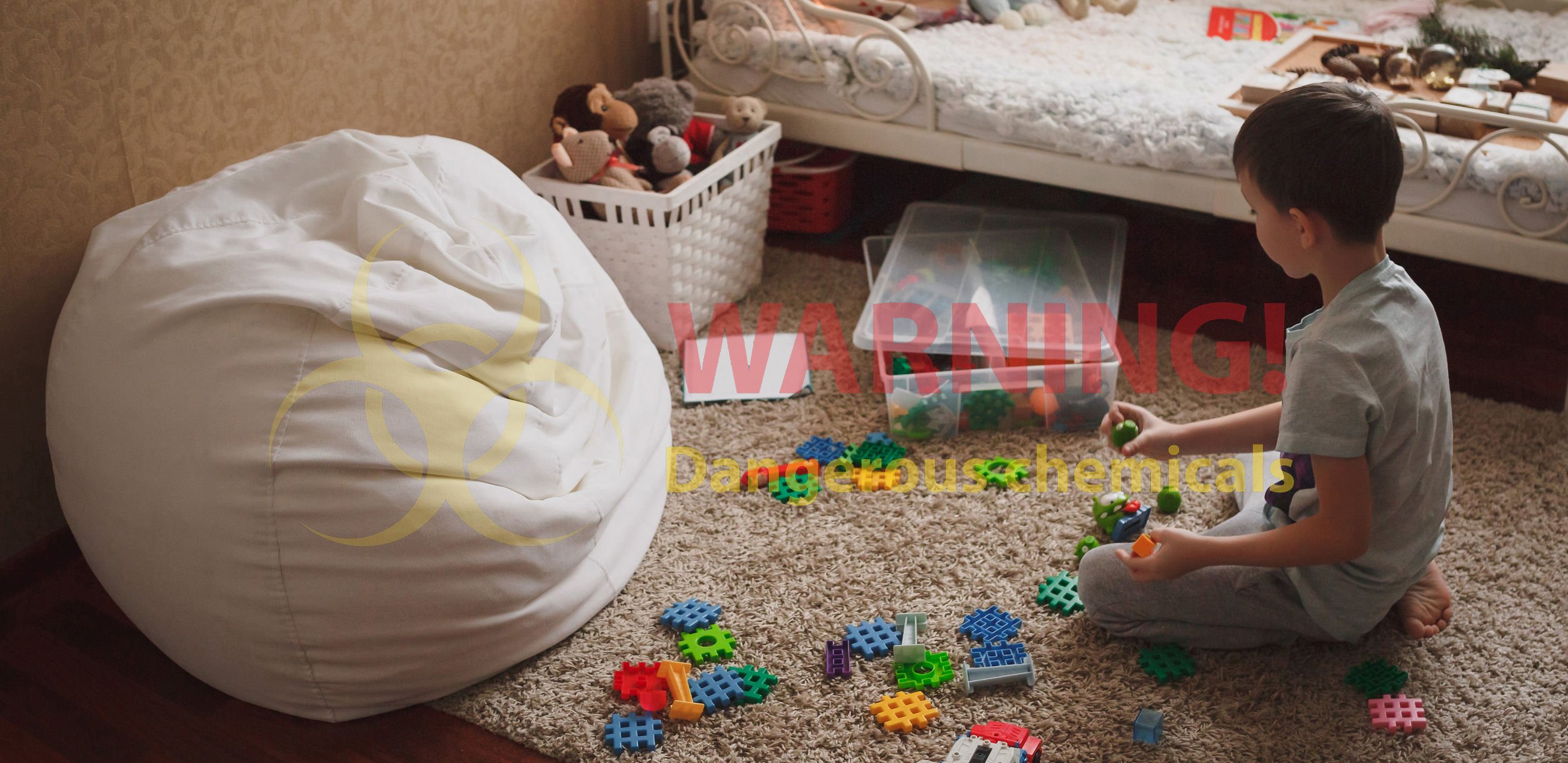These Common Household Toxins are Poisoning Children

People relax on sofas and walk across their kitchen floors without giving it a second thought, but a study shows that toxic chemicals used in furniture and vinyl flooring to make them fire-resistant could be poisoning children. [1]
The problem is most prevalent in public housing where scientists say children have toxin levels in their blood and urine up to 15 times higher than those who aren’t exposed.
The flame-retardant chemicals, called PBDEs (polybrominated diphenyl ethers), are linked to neurodevelopmental delays, obesity, endocrine and thyroid disruption, cancer, and other diseases.
Flame Retardants: 5 Dangerous Facts About These Toxins
Despite efforts to reduce the prevalence of PBDEs, they continue to persist, said Dr. Heather Stapleton of Duke University.
The full scope of the dangers posed by polybrominated diphenyl ethers is unknown because few studies have investigated how or if the chemicals are absorbed into the bloodstreams of children who are exposed to them.
Stapleton said:
“There are concerns that these chemicals could affect the developing brain.
In homes with flame retardants, particularly for children who spend most of their time indoors, they have widespread exposure, for example in household dust.”
PBDEs fall under the umbrella term semi-volatile organic compounds. They are found in electronics, furniture, and building materials. In pieces of furniture like sofas, they are found in the foam inside of the cushions.
In the past, PBDEs were used in most couches, rugs, and TVs. Research shows these chemicals can stunt the development of the brain and reproductive system. Phthalates, used in vinyl flooring and carpets, as well as food packaging, have been linked to obesity because the chemicals change the way the body stores fat.


Improvements are Being Made, But…
In the United States, great strides have been made to reduce the prevalence of PBDEs. When Stapleton first tested consumer products for the fire-retardants, 80% contained PBDEs. Her most recent tests showed about 20% of consumer products contained the toxins.
But U.S. regulators have stopped short of banning PBDEs and they continue to persist in the environment, particularly in public housing, where older flooring, furniture, and other products have not been swapped out for safer ones.
What’s more, the toxins keep showing up in unexpected places, including in farmed fish, even though both the U.S. and European Union (EU) have placed restrictions on PBDEs in fish-farming waters.
The Study
For the study, which began in 2014, Stapleton and her colleagues analyzed indoor dust and air from inside the homes of 190 families and 203 children, along with foam from inside furniture. They collected blood and urine samples from the children to test for the prevalence of PBDEs. [2]
Stapleton said:
“We quantified 44 biomarkers of exposure to phthalates, organophosphate esters, brominated flame retardants, parabens, phenols, antibacterial agents, and perfluoroalkyl and polyfluoroalkyl substances (PFAS).”
Children from homes with vinyl flooring had levels of benzyl butyl phthalate metabolite – a chemical linked to respiratory and skin conditions, multiple myeloma, and other health problems – in their urine that were 15 times higher compared with children who were not exposed. [1]
Children who lived in homes that had a sofa in the main living area that had PBDEs in the foam had a 6-fold higher concentration of PBDEs in their blood.
PBDEs are still so prevalent that they have even shown up in marine organisms in the Mariana Trench, the deepest part of the ocean. The toxins can linger for years and bind to other particles in the water that can carry them throughout the ocean. Studies have found that PBDEs and other organic pollutants are prevalent in fish worldwide.
Children may suffer the ill effects of PBDEs even if they haven’t been directly exposed to it. A study published in 2017 found that prenatal exposure to the chemicals may lead to lower IQ scores in children.
Reducing Exposure to Polybrominated Diphenyl Ethers
Like anything else, know that we’re always bombarded with toxins from various sources; it isn’t great, but in some respect, it’s simply part of our lives and society – unless you want to live in a bubble. So while I wouldn’t overly stress about this, it’s good to know that these toxins do exist, and there are some simple things you can do to reduce exposure without stressing yourself into a jumbled ball of yarn.

Sources:
[1] Daily Mail
[2] Earth
Images Source:
